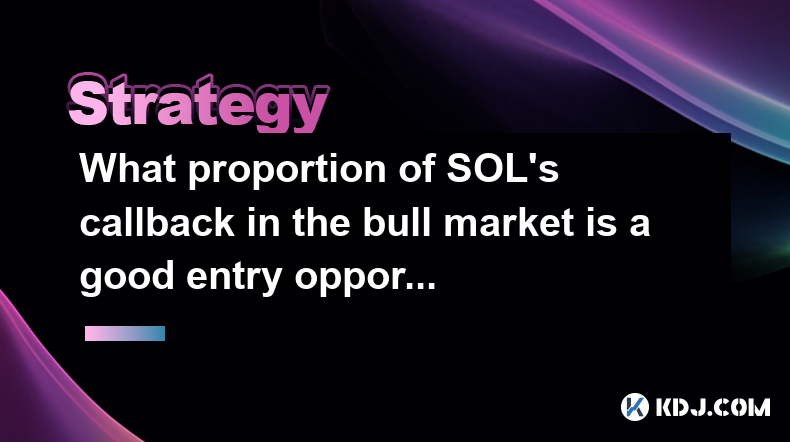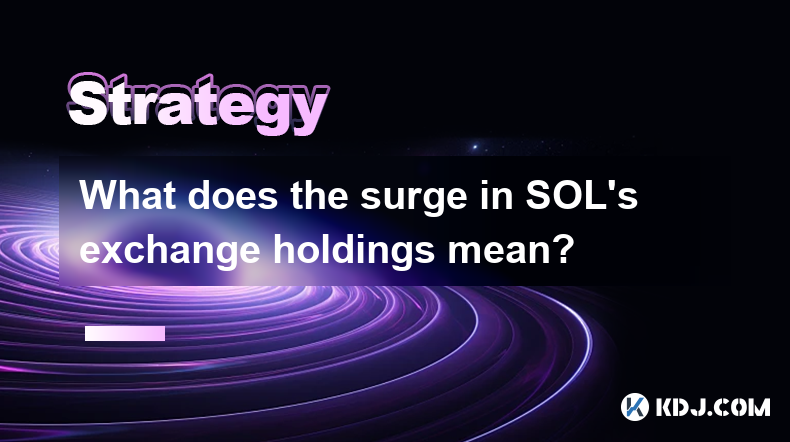-
 Bitcoin
Bitcoin $88,555.6766
1.18% -
 Ethereum
Ethereum $1,626.4043
-1.22% -
 Tether USDt
Tether USDt $0.9998
-0.01% -
 XRP
XRP $2.1018
-1.27% -
 BNB
BNB $605.8750
0.04% -
 Solana
Solana $140.3422
0.04% -
 USDC
USDC $0.9999
0.00% -
 Dogecoin
Dogecoin $0.1643
1.27% -
 TRON
TRON $0.2481
1.05% -
 Cardano
Cardano $0.6359
-1.63% -
 Chainlink
Chainlink $13.3216
-2.53% -
 UNUS SED LEO
UNUS SED LEO $9.1797
-2.79% -
 Avalanche
Avalanche $20.3681
-2.52% -
 Stellar
Stellar $0.2473
-4.43% -
 Sui
Sui $2.3043
2.50% -
 Shiba Inu
Shiba Inu $0.0...01257
-1.15% -
 Toncoin
Toncoin $2.9429
-3.48% -
 Hedera
Hedera $0.1738
0.16% -
 Bitcoin Cash
Bitcoin Cash $347.0587
1.49% -
 Hyperliquid
Hyperliquid $18.2576
-0.35% -
 Litecoin
Litecoin $79.8456
-0.89% -
 Polkadot
Polkadot $3.7809
-4.73% -
 Dai
Dai $0.9999
-0.01% -
 Bitget Token
Bitget Token $4.4439
-0.50% -
 Ethena USDe
Ethena USDe $0.9991
-0.01% -
 Pi
Pi $0.6313
-0.96% -
 Monero
Monero $216.2035
0.57% -
 Pepe
Pepe $0.0...08138
3.46% -
 Uniswap
Uniswap $5.3889
-1.68% -
 OKB
OKB $50.9281
-0.23%
What are the risks of participating in Ethereum staking?
Staking ETH involves potential risks such as hacking, illiquidity, volatility, infrastructure issues, and regulatory uncertainties that can impact the security, access, and value of your assets.
Feb 25, 2025 at 06:30 pm

Key Points
- Security risks: Your staked ETH and rewards are vulnerable to hacking, malicious attacks, and smart contract bugs.
- Liquidity risks: Staked ETH is locked for a fixed duration, making it illiquid and unavailable for trading or use.
- Volatility risks: The value of ETH can fluctuate significantly, leading to potential losses on your staked assets.
- Infrastructure risks: Hardware or software malfunction, network outages, or validator downtime can affect your rewards and the security of your stake.
- Regulatory risks: Government or regulatory changes could impact the operation of staking pools or the taxation of rewards.
Risks of Participating in Ethereum Staking
1. Security Risks
Staking involves entrusting your ETH to a third party, known as a staking pool or validator. This introduces security risks, such as:
- Hacking: Staking pools can be targeted by hackers seeking to steal staked ETH and rewards. Consider choosing reputable and secure pools with a strong track record.
- Malicious Attacks: Validators may engage in unethical behavior, such as slashing or collusion, which could result in the loss of your staked ETH.
- Smart Contract Bugs: Ethereum staking relies on smart contracts, which can contain vulnerabilities. Exploitable bugs could compromise your staked assets.
2. Liquidity Risks
When you stake ETH, you lock it for a fixed duration, typically around 12-24 months. During this period, your staked ETH is illiquid, meaning you cannot withdraw or trade it until the staking period expires. This can be a drawback if you need to access your funds for unexpected expenses or market opportunities.
3. Volatility Risks
The value of ETH fluctuates constantly, influenced by market conditions and events. This means that the value of your staked ETH and rewards can also be volatile. If the price of ETH drops significantly, you could incur losses on your investment. Conversely, if the price of ETH rises, you could potentially earn higher rewards.
4. Infrastructure Risks
Staking requires reliable infrastructure to ensure the smooth operation of validators. Potential risks include:
- Hardware Malfunction: Validators rely on computers and hardware components that can malfunction, leading to downtime and potential slashing penalties.
- Software Bugs: Validator software could contain bugs that cause errors or security vulnerabilities, affecting your rewards or the security of your stake.
- Network Outages: Ethereum network outages or disruptions can prevent validators from performing their duties, resulting in missed rewards and potential penalties.
5. Regulatory Risks
Government or regulatory agencies may implement policies that impact the operation of staking pools or the taxation of rewards. For instance, the US Securities and Exchange Commission (SEC) has recently been scrutinizing cryptocurrency staking practices, potentially leading to stricter regulations.
FAQs
1. What is the "slashing penalty"?
Slashing occurs when a validator behaves unethically or fails to follow the Ethereum protocol rules. Penalties involve losing some or all of the staked ETH associated with the validator.
2. What are the rewards for staking ETH?
Staking rewards are earned for validating transactions on the Ethereum network. Rewards are typically distributed in ETH and calculated based on the number of ETH staked and the duration of the staking period.
3. Can I unstake my ETH before the staking period ends?
No, staked ETH is locked for a fixed period and cannot be withdrawn or unstaked prematurely. You must wait until the staking period expires to access your funds.
4. What is the minimum amount of ETH required to stake?
The minimum amount required to stake ETH varies depending on the staking pool or validator you choose. Some platforms may have lower minimums, while others require more ETH to participate in staking.
5. Are there any other risks involved in staking ETH?
In addition to the risks outlined above, other potential risks include validator downtime, network congestion, and competition from other stakers for rewards.
Disclaimer:info@kdj.com
The information provided is not trading advice. kdj.com does not assume any responsibility for any investments made based on the information provided in this article. Cryptocurrencies are highly volatile and it is highly recommended that you invest with caution after thorough research!
If you believe that the content used on this website infringes your copyright, please contact us immediately (info@kdj.com) and we will delete it promptly.
- U.S. Digital Asset Firms Are Reportedly Considering Applying for Bank Charters and Licenses
- 2025-04-22 15:40:12
- OM Slides Deeper as Massive Token Burn Falls Flat
- 2025-04-22 15:40:12
- Ethereum Crashes, Its Share of the Overall Virtual Asset Market Fell Below 7%
- 2025-04-22 15:35:12
- Dogecoin Community Celebrates Dogeday 4/20, Buoyed by ETF Filing Buzz
- 2025-04-22 15:35:12
- ZetaChain Integrates Arbitrum to Offer Streamlined Universal App Usage
- 2025-04-22 15:30:12
- Deutsche Bank and Standard Chartered Are Expanding Their Crypto Operations in the United States
- 2025-04-22 15:30:12
Related knowledge

Can LTC buy the bottom after three consecutive negative weekly lines?
Apr 22,2025 at 04:36pm
The question of whether Litecoin (LTC) can buy the bottom after three consecutive negative weekly lines is a nuanced one, often influenced by various market factors, technical analysis, and sentiment within the cryptocurrency community. To delve into this, we need to consider the technical indicators, historical patterns, and the broader market context....

How to use trading volume to determine the buying and selling timing of BCH?
Apr 22,2025 at 04:14pm
Trading volume is a critical indicator that traders use to gauge the strength and direction of market trends, and it can be particularly useful when determining the buying and selling timing of Bitcoin Cash (BCH). By analyzing the trading volume, investors can gain insights into the market sentiment and make more informed decisions about when to enter o...

What proportion of SOL's callback in the bull market is a good entry opportunity?
Apr 22,2025 at 03:43pm
The question of what proportion of SOL's callback in a bull market represents a good entry opportunity is a nuanced one, requiring a deep dive into market dynamics, historical data, and risk management strategies. Let's explore this topic in detail. Understanding SOL and Bull MarketsSolana (SOL) is a high-performance blockchain platform known for its fa...

Can BCH's Willy indicator be bottomed out in the oversold area?
Apr 22,2025 at 02:56pm
Understanding the Willy IndicatorThe Willy indicator, also known as the Willy ratio, is a technical analysis tool used in the cryptocurrency market to assess the potential for a price reversal. It is calculated by dividing the current price of a cryptocurrency by its 200-day moving average. When the Willy indicator falls into the oversold area, it sugge...

What does the surge in SOL's exchange holdings mean?
Apr 22,2025 at 04:07pm
The recent surge in SOL's exchange holdings has sparked considerable interest and debate within the cryptocurrency community. SOL, the native token of the Solana blockchain, has seen a notable increase in the amount of tokens held on various cryptocurrency exchanges. This phenomenon can have several implications for the token's price, market sentiment, ...

What to do if SHIB's HODL wave indicator shows loose chips?
Apr 21,2025 at 03:07pm
If the SHIB's HODL wave indicator shows loose chips, it suggests that a significant portion of the SHIB holders are selling their tokens, potentially leading to increased volatility and a possible price drop. Understanding how to navigate this situation is crucial for any SHIB investor. This article will guide you through the steps to take when you noti...

Can LTC buy the bottom after three consecutive negative weekly lines?
Apr 22,2025 at 04:36pm
The question of whether Litecoin (LTC) can buy the bottom after three consecutive negative weekly lines is a nuanced one, often influenced by various market factors, technical analysis, and sentiment within the cryptocurrency community. To delve into this, we need to consider the technical indicators, historical patterns, and the broader market context....

How to use trading volume to determine the buying and selling timing of BCH?
Apr 22,2025 at 04:14pm
Trading volume is a critical indicator that traders use to gauge the strength and direction of market trends, and it can be particularly useful when determining the buying and selling timing of Bitcoin Cash (BCH). By analyzing the trading volume, investors can gain insights into the market sentiment and make more informed decisions about when to enter o...

What proportion of SOL's callback in the bull market is a good entry opportunity?
Apr 22,2025 at 03:43pm
The question of what proportion of SOL's callback in a bull market represents a good entry opportunity is a nuanced one, requiring a deep dive into market dynamics, historical data, and risk management strategies. Let's explore this topic in detail. Understanding SOL and Bull MarketsSolana (SOL) is a high-performance blockchain platform known for its fa...

Can BCH's Willy indicator be bottomed out in the oversold area?
Apr 22,2025 at 02:56pm
Understanding the Willy IndicatorThe Willy indicator, also known as the Willy ratio, is a technical analysis tool used in the cryptocurrency market to assess the potential for a price reversal. It is calculated by dividing the current price of a cryptocurrency by its 200-day moving average. When the Willy indicator falls into the oversold area, it sugge...

What does the surge in SOL's exchange holdings mean?
Apr 22,2025 at 04:07pm
The recent surge in SOL's exchange holdings has sparked considerable interest and debate within the cryptocurrency community. SOL, the native token of the Solana blockchain, has seen a notable increase in the amount of tokens held on various cryptocurrency exchanges. This phenomenon can have several implications for the token's price, market sentiment, ...

What to do if SHIB's HODL wave indicator shows loose chips?
Apr 21,2025 at 03:07pm
If the SHIB's HODL wave indicator shows loose chips, it suggests that a significant portion of the SHIB holders are selling their tokens, potentially leading to increased volatility and a possible price drop. Understanding how to navigate this situation is crucial for any SHIB investor. This article will guide you through the steps to take when you noti...
See all articles























































































